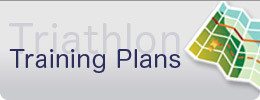During a hard training block or training session, your body experiences physiological stress, which stimulates adaptation (increased strength and endurance) by the body to the stress assuming adequate rest and recovery are taken.
Both sides of the fitness equation – training stimuli and resulting adaptation through adequate recovery – are critical. By using better recovery techniques after a hard training session or training period, you can facilitate adaptation while incurring less risk of injury (especially overuse injuries), illness and overtraining.
Techniques for Better Recovery
Here are some techniques you can use to enhance your recovery:
Hydrate—Begin drinking water immediately after completing a workout and in the hours afterwards to rehydrate, help transport nutrients throughout your body and remove exercise waste products.
Consume Calories After a Workout—A 150-250 calorie recovery drink or meal that’s three parts high glycemic carbohydrates and one part protein helps with refueling and with the rebuilding process. This drink or meal should ideally be consumed within 30 minutes of finishing the workout.
Wear Compression Gear—Compression tights, compression socks and compression boots (such as Normatec) will help blood flow back from your extremities (feet and lower legs) to prevent pooling (decreases risk of blood clots) and into your heart again. Compression boots also provide a mild massage.
Elevate Your Legs—Simply elevating your legs up against a wall for 10 minutes also helps blood flow back from your extremities.
Get a Massage—Massage helps with blood flow, fascial release and releasing knots or “trigger points” in muscles. Plus, massage feels good.
Stretch—Stretching helps with injury prevention and blood flow to your muscles and activates your parasympathetic nervous system. Dynamic warm up stretching or foam rolling is appropriate pre-workout. Save static (hold) stretching until after a workout when you are fully warmed up (plus static stretching will temporarily weaken the muscle fibers being stretched).
Use a Foam Roller—Like massage, foam rolling releases facial/muscle tension and knots while facilitating blood flow.
Listen to Calm Music—Listen to Enya or another calming artist or music genre to reduce stress hormones and down regulate your autonomic nervous system.
Perform Easy Recovery Workouts—Hiking, a light spin on the bike, an easy swim or a yoga class helps your body remove waste from your muscles and increases blood circulation. These workouts need to be very easy, short, relaxing and not stressful.
Use Heat—Using a heating pad, hot tub, bath, or shower helps muscles relax and increases blood flow to tired muscles and reduces cortisol levels.
Use Cold—An ice bath or cryotherapy restricts blood vessels, reduces swelling and decreases muscle soreness. Once the cold source is removed, blood flow returns. Can be used alternating with heat.
Take a Nap—Sleep is the best way to let your body and mind fully rest. During this time, a plethora of hormones are released, including testosterone and human growth hormone.
In the second part of this blog post, we’ll talk about what not to do—things that either reduce the training stimuli too much or reduce your body’s ability to recover.
Happy recovery!
David
P.S. Need a purposeful training plan that takes the guesswork out of your training and gives you a purposeful structure to reduce risk of overtraining and injury? Check out our training plans for triathlons from sprint to IRONMAN® and running races from 5k to marathon.
—
 Coach David Glover, MS, CSCS has completed 28 IRONMAN distance triathlons, which includes two sub 9 hour finishes and winning Vineman Full twice. David’s passion is helping triathlete and other endurance athletes achieve their dreams through his online triathlon education and training company, ENDURANCEWORKS. David has an MS in Exercise Physiology and is certified as a coach by IRONMAN Triathlon, USA Triathlon and USA Cycling plus has his CSCS from NSCA. After six years of living, training and coaching in the triathlon mecca of Boulder, CO, David currently resides in Southern California.
Coach David Glover, MS, CSCS has completed 28 IRONMAN distance triathlons, which includes two sub 9 hour finishes and winning Vineman Full twice. David’s passion is helping triathlete and other endurance athletes achieve their dreams through his online triathlon education and training company, ENDURANCEWORKS. David has an MS in Exercise Physiology and is certified as a coach by IRONMAN Triathlon, USA Triathlon and USA Cycling plus has his CSCS from NSCA. After six years of living, training and coaching in the triathlon mecca of Boulder, CO, David currently resides in Southern California.


